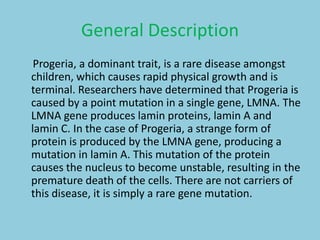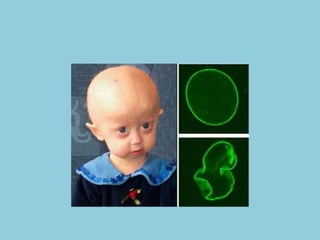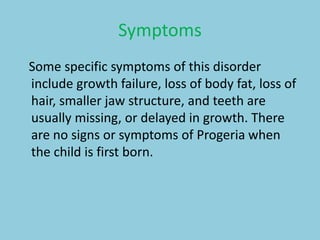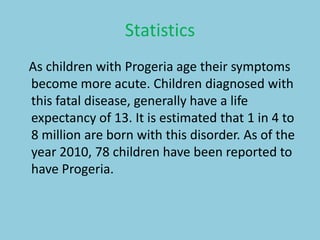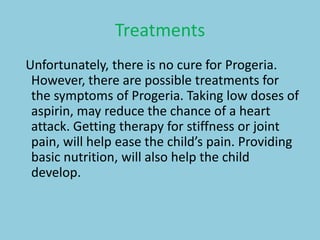Progeria is a rare genetic disorder that causes rapid aging in children. It is caused by a mutation in the LMNA gene, which produces abnormal lamin A proteins that cause cell nuclei to become unstable. Children with Progeria experience symptoms like hair loss, stiffness, and joint pain. They typically live until age 13. While there is no cure, treatments can help manage symptoms like joint pain and improve nutrition. The disease does not affect mental abilities, so children with Progeria can participate in everyday activities like school and playing with friends.

